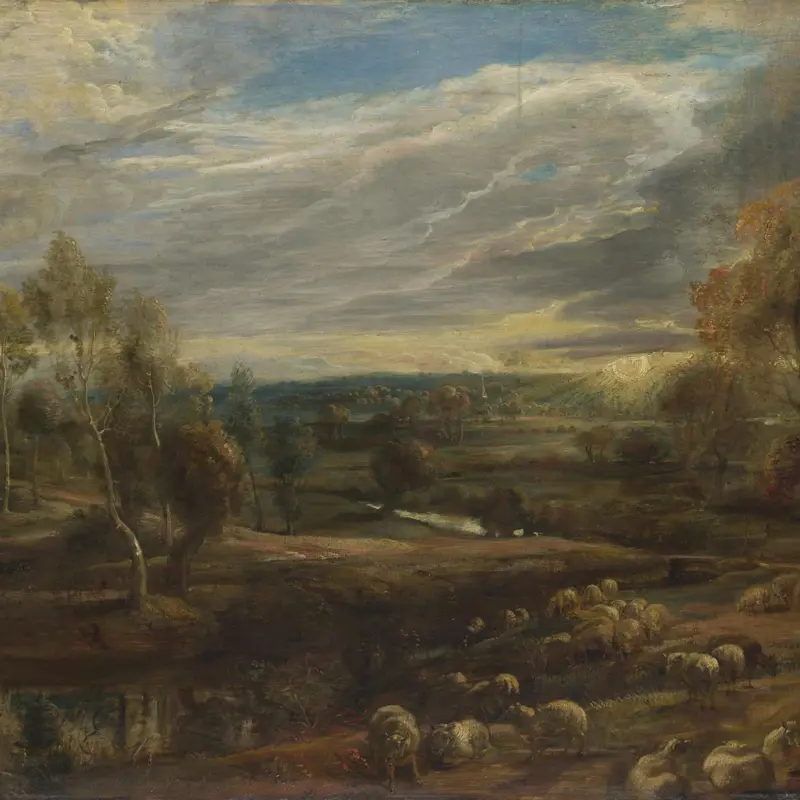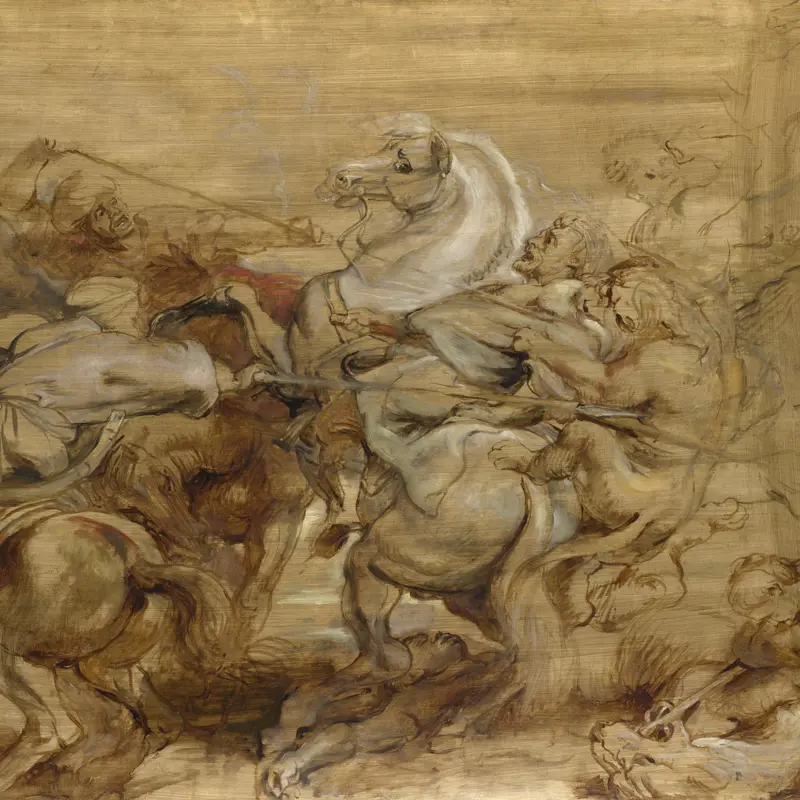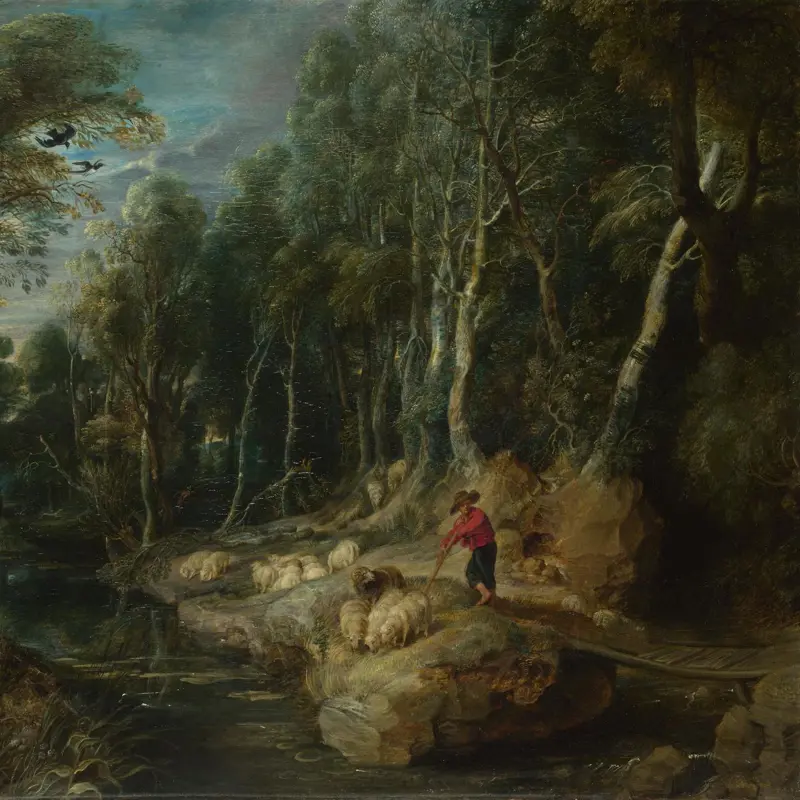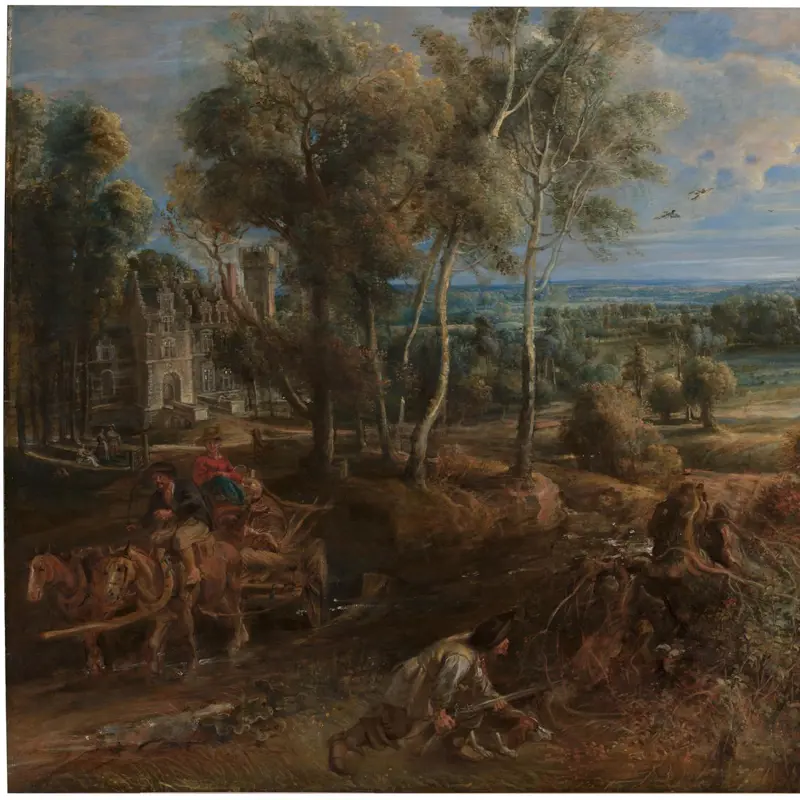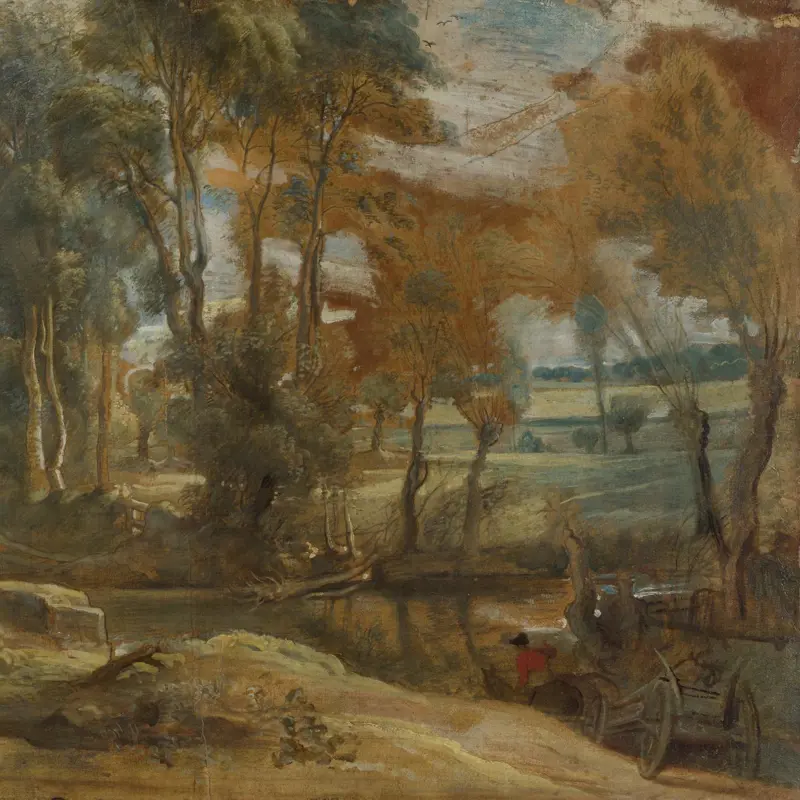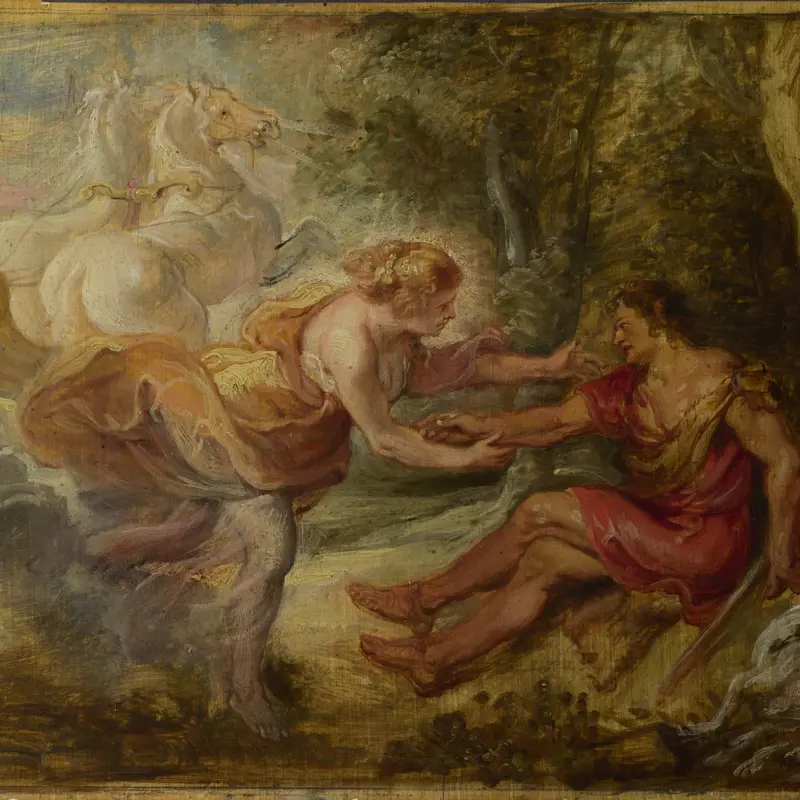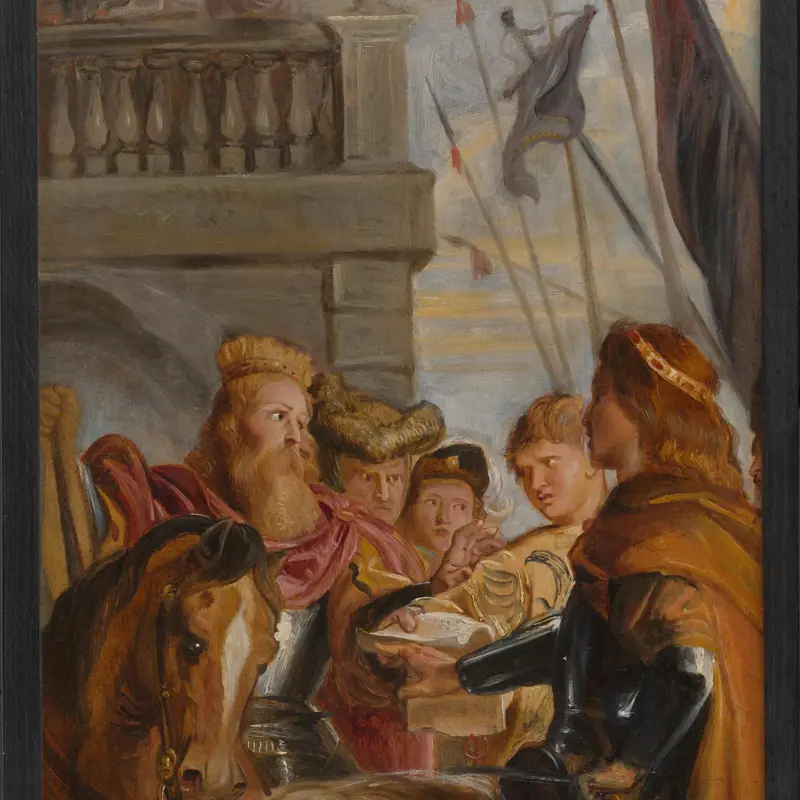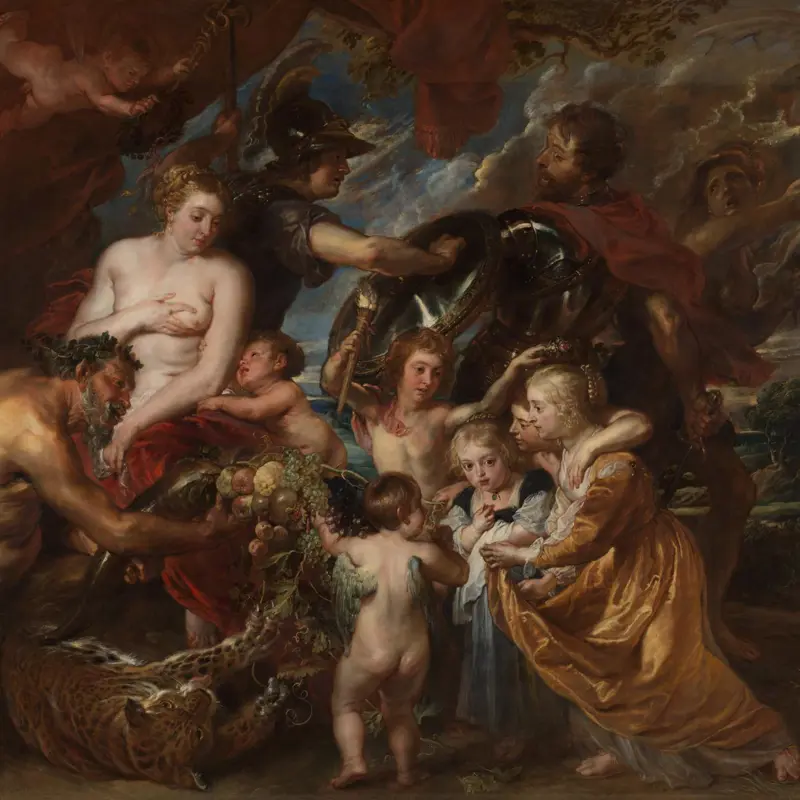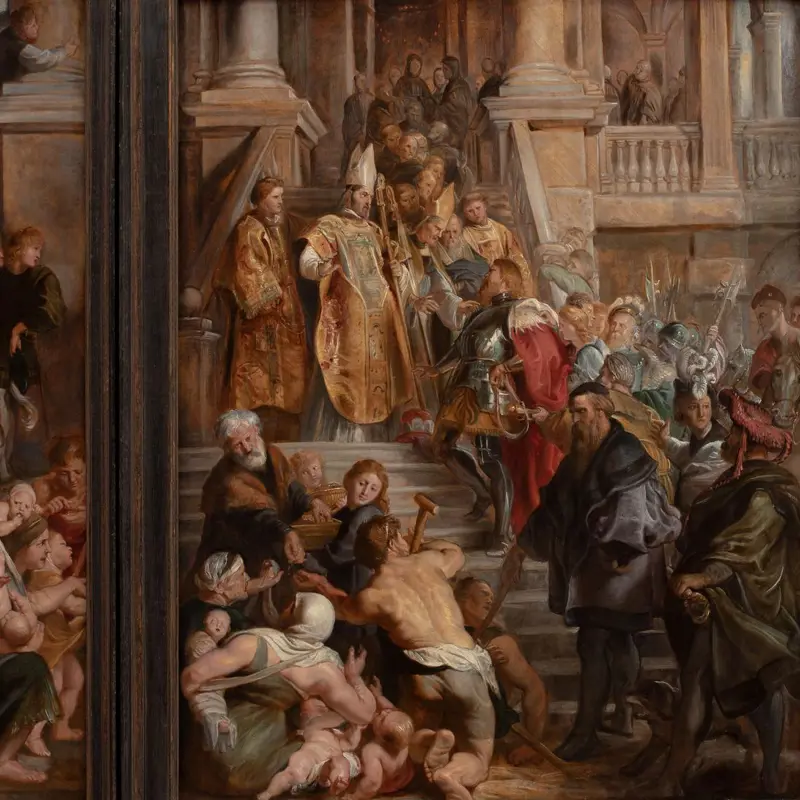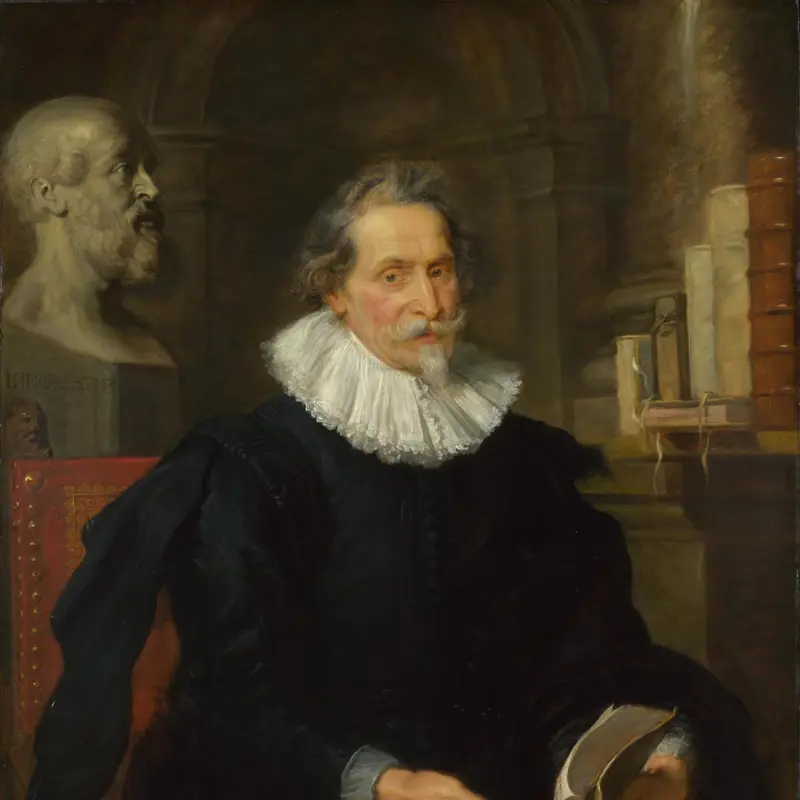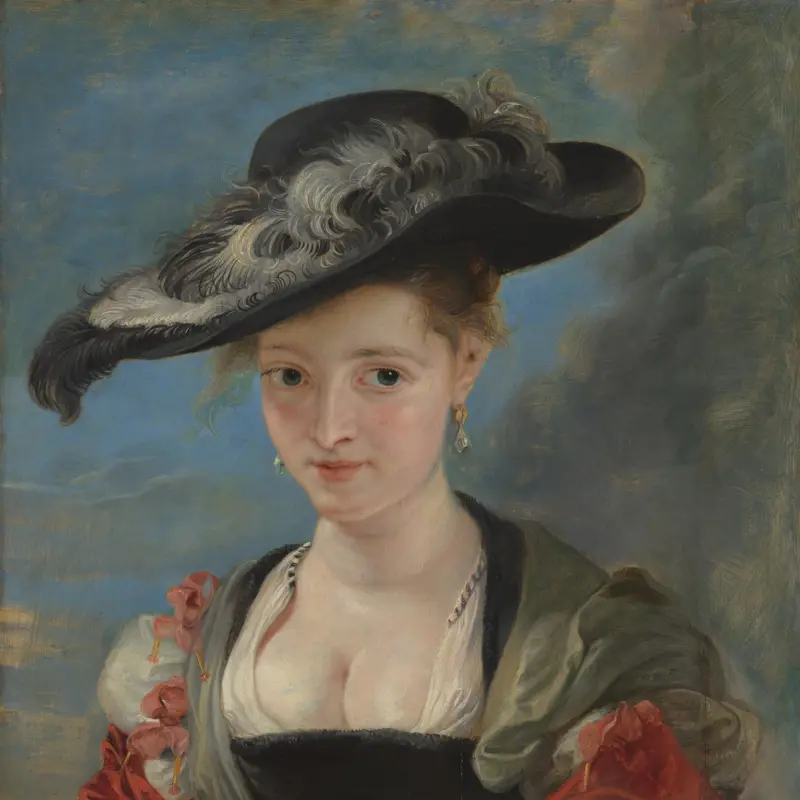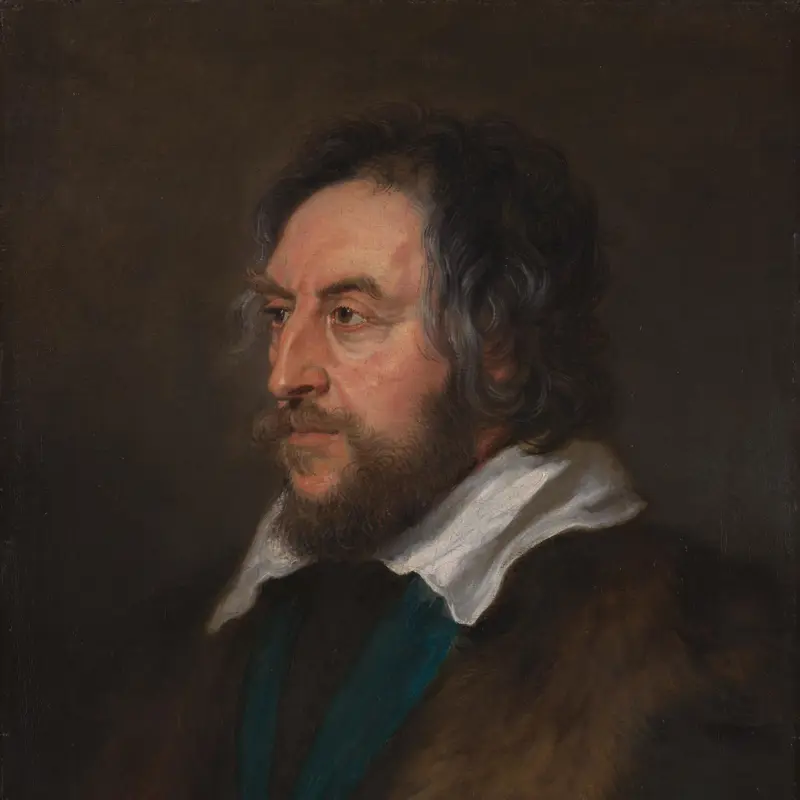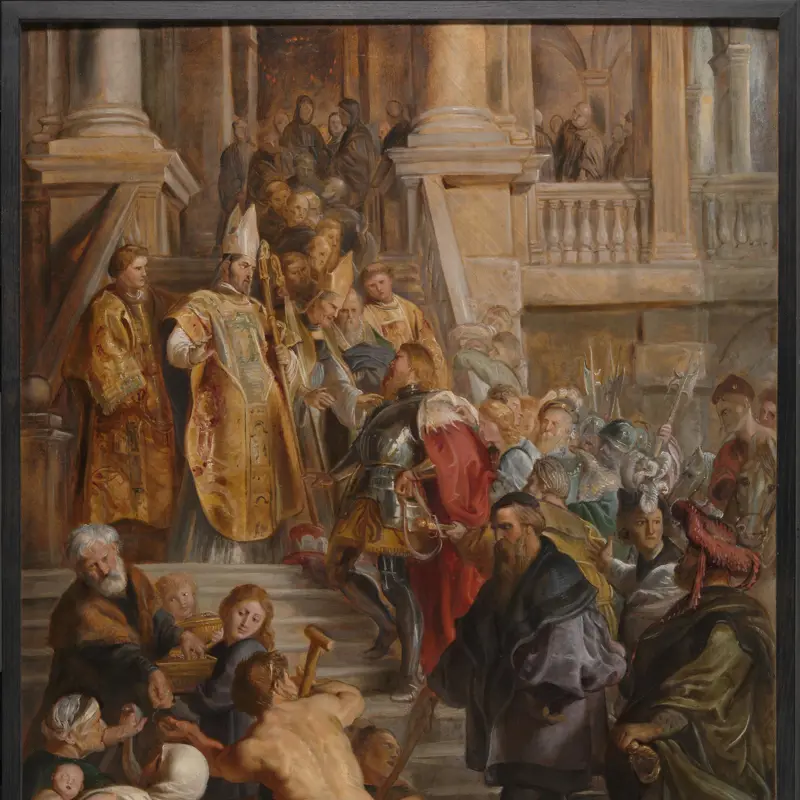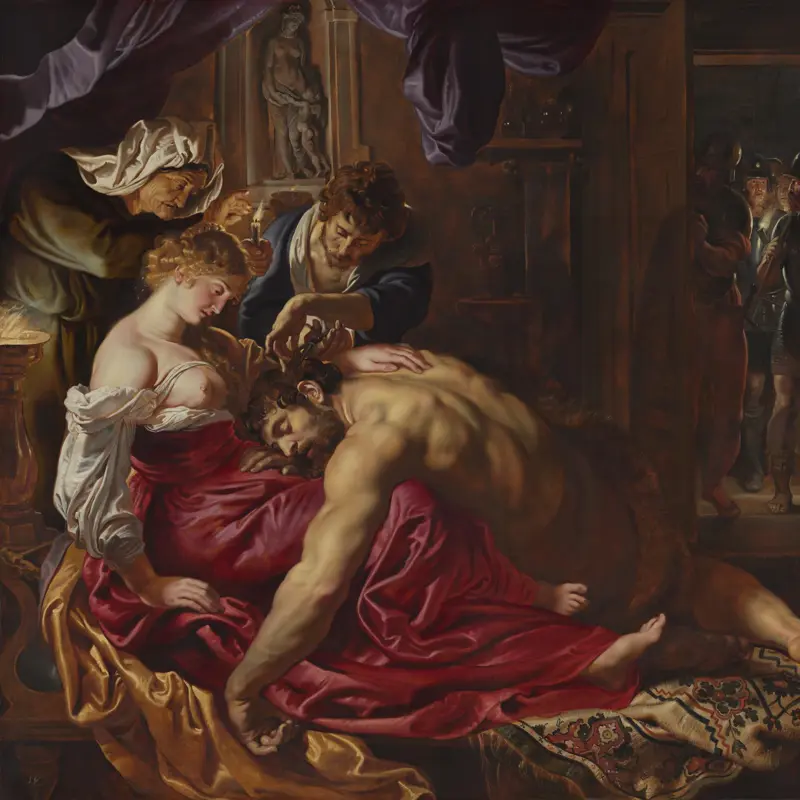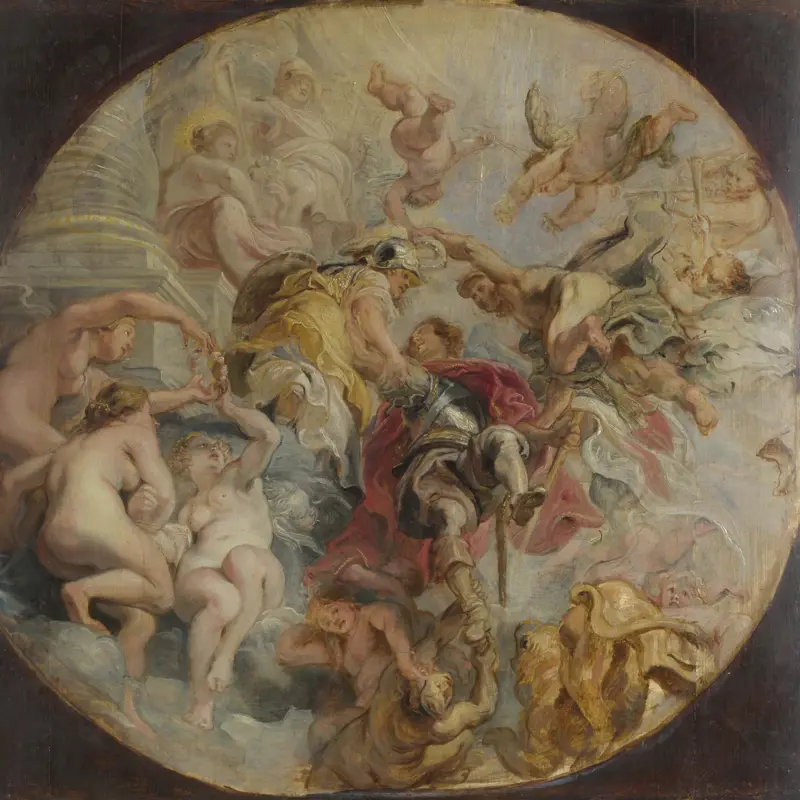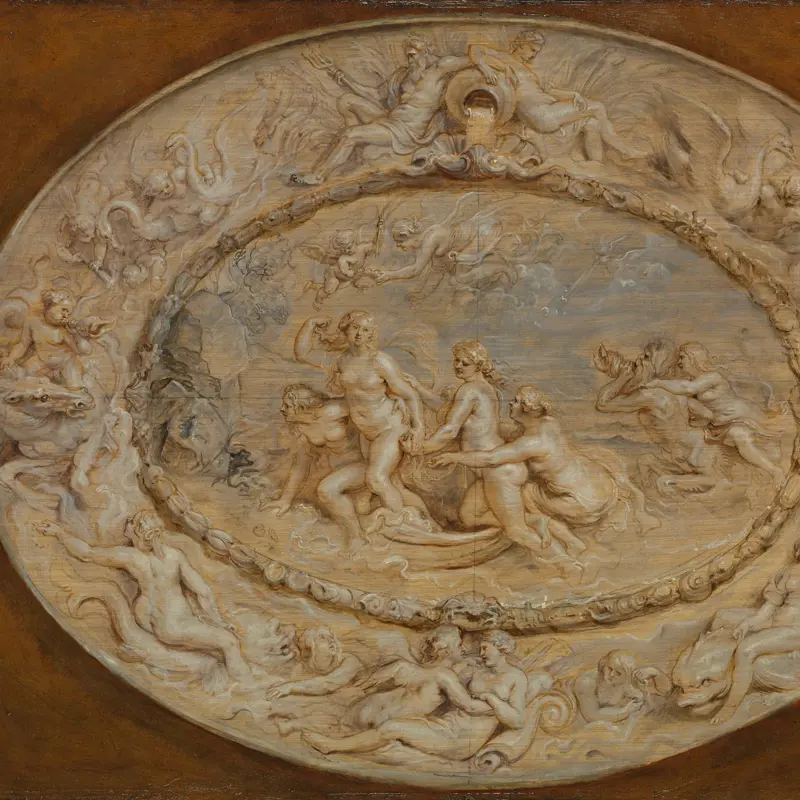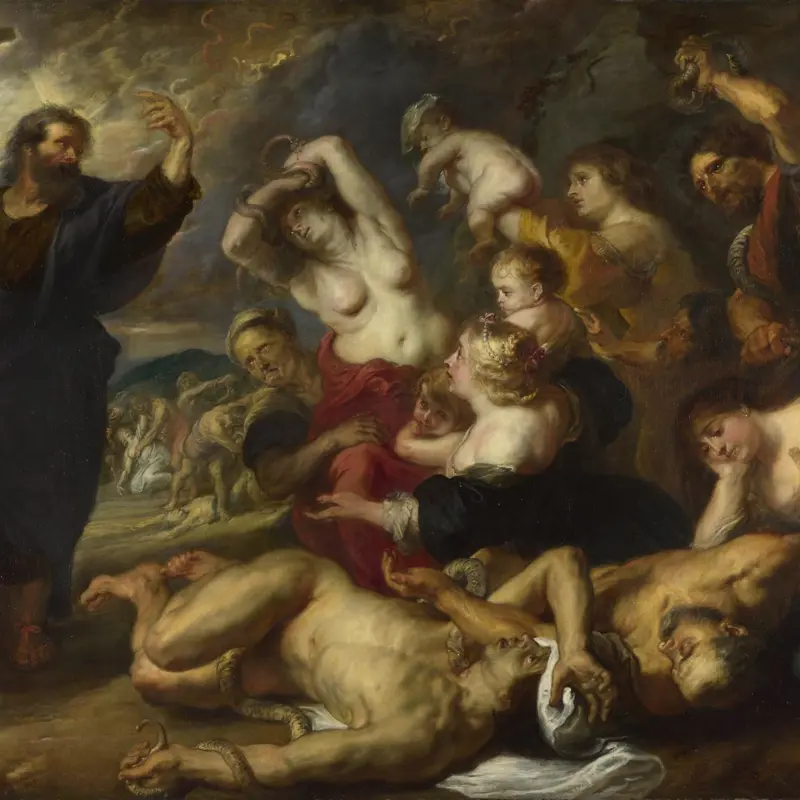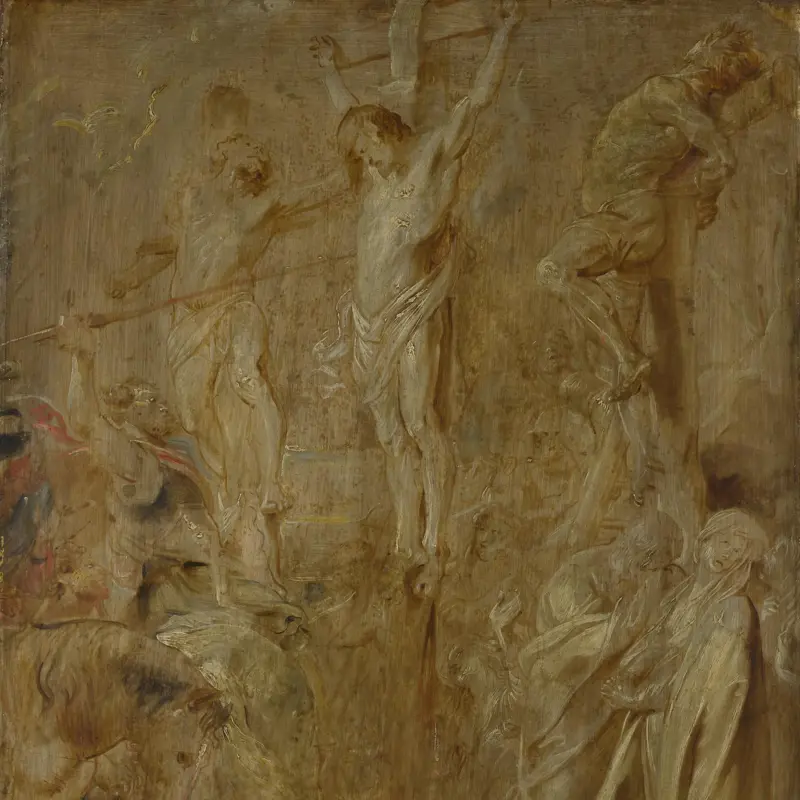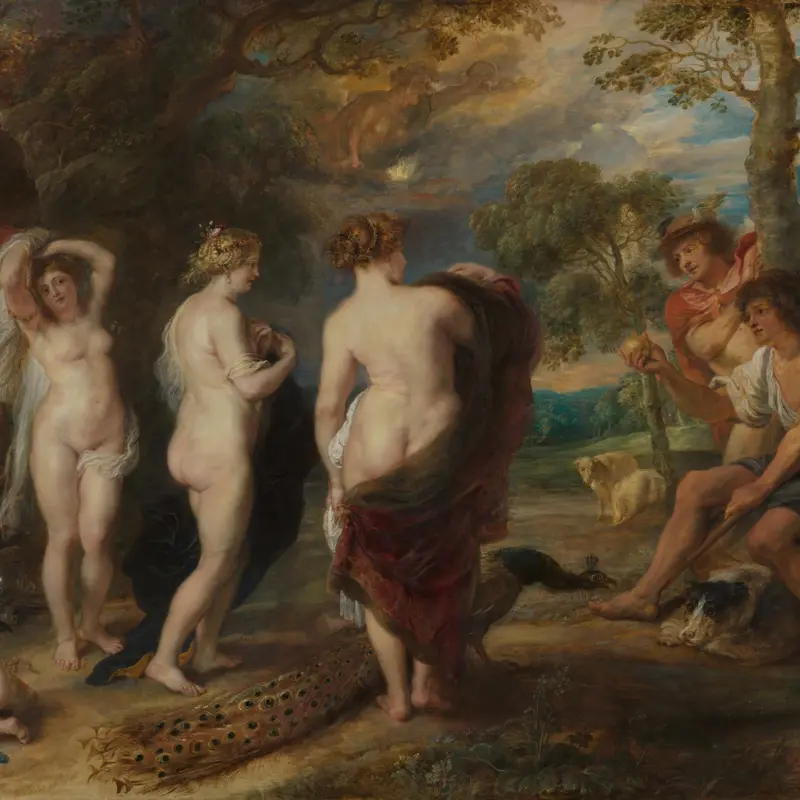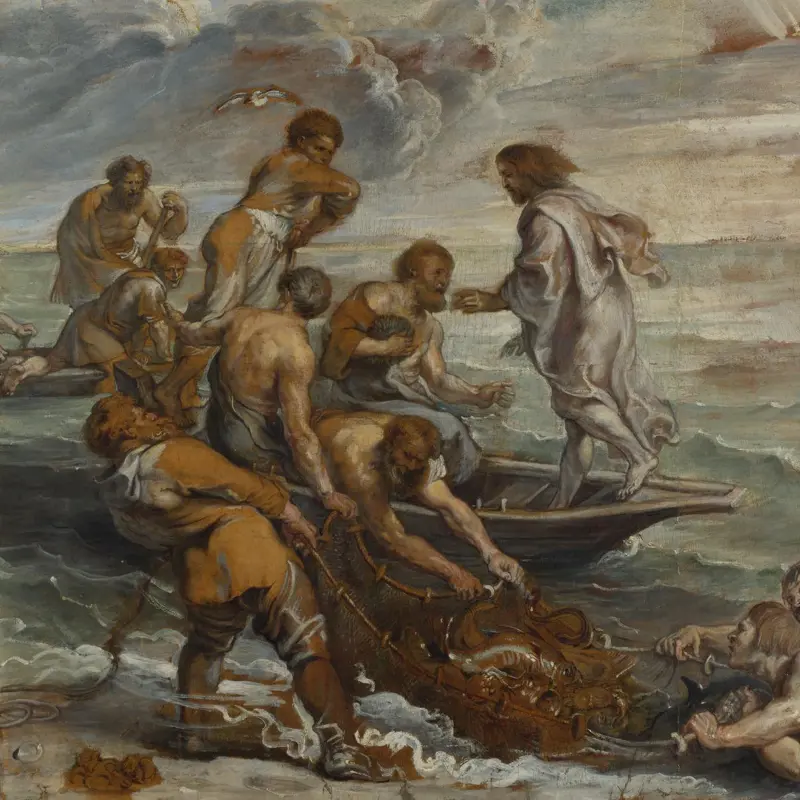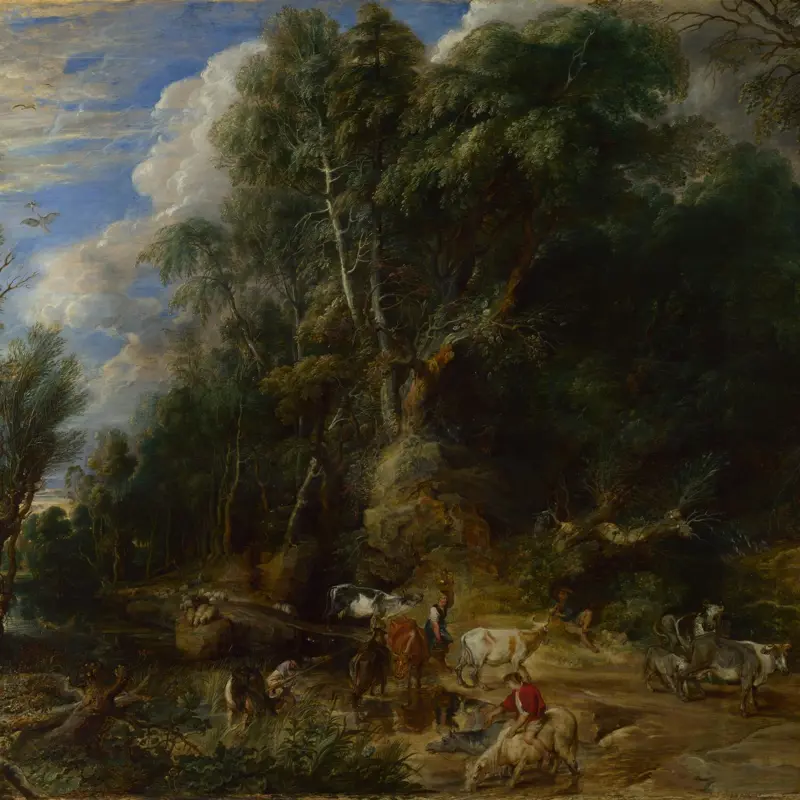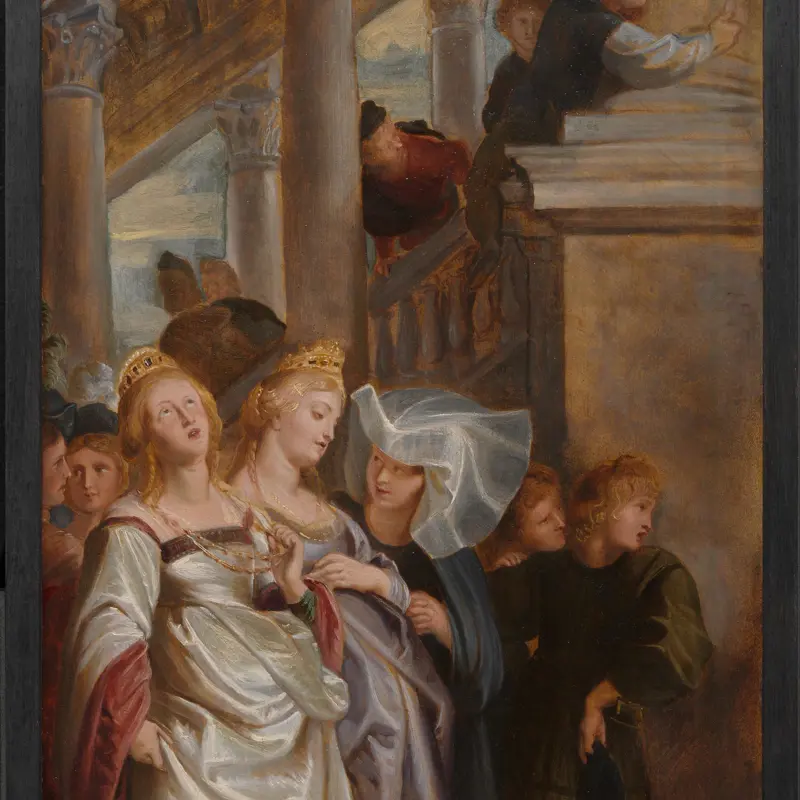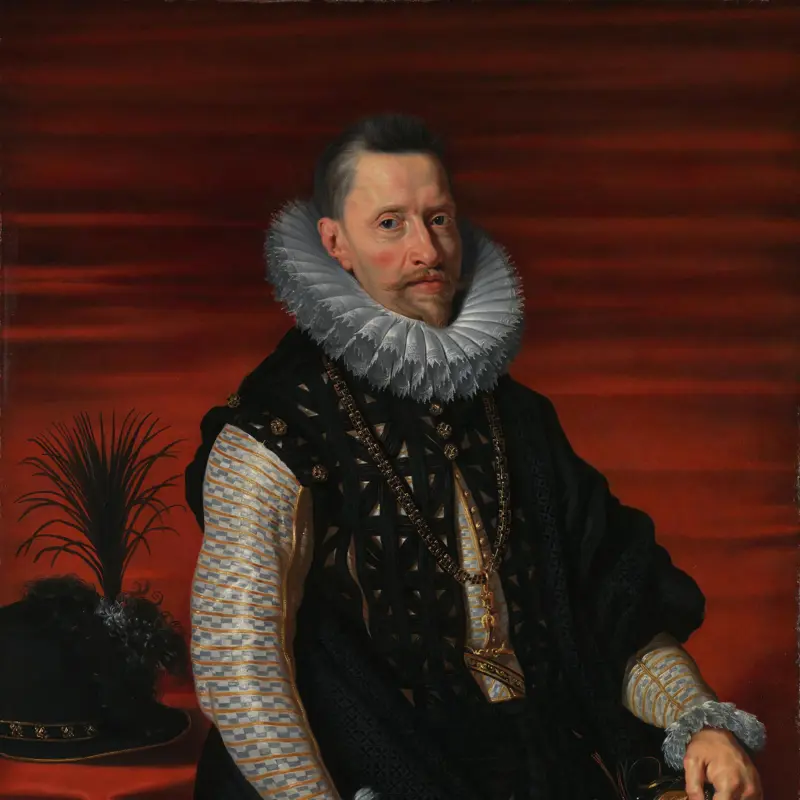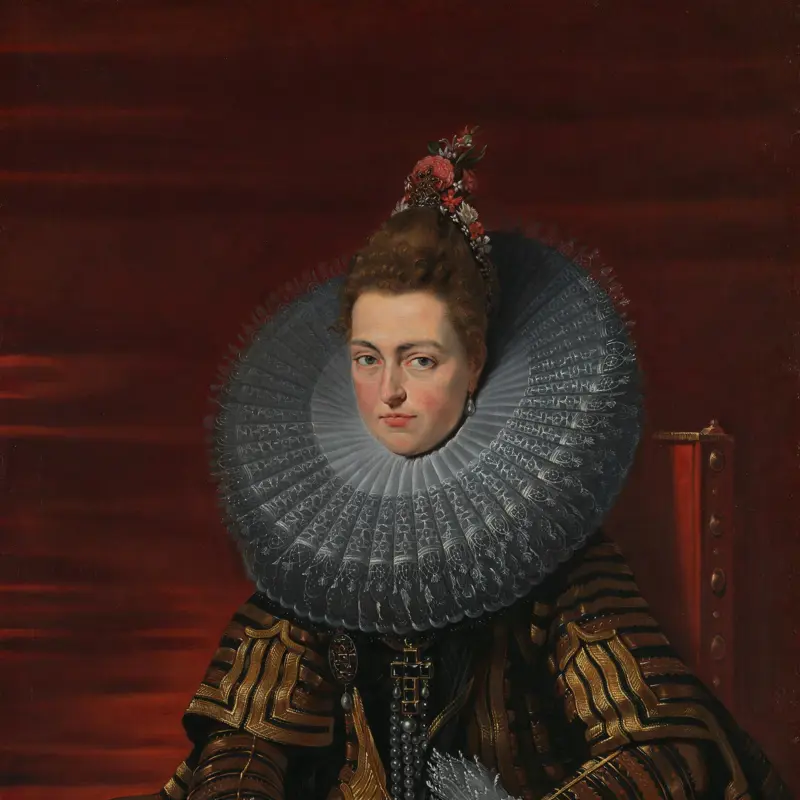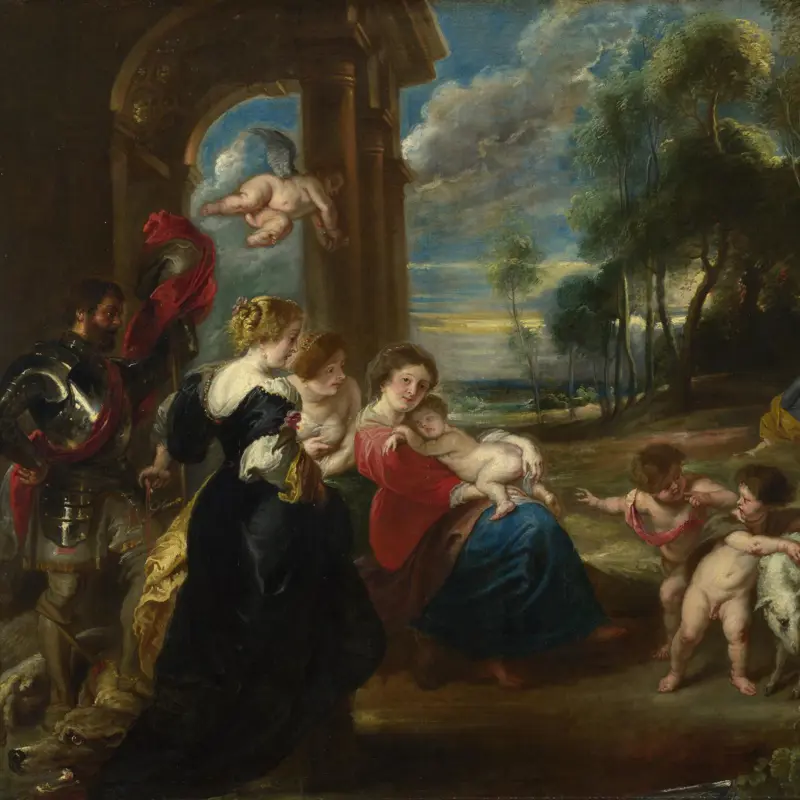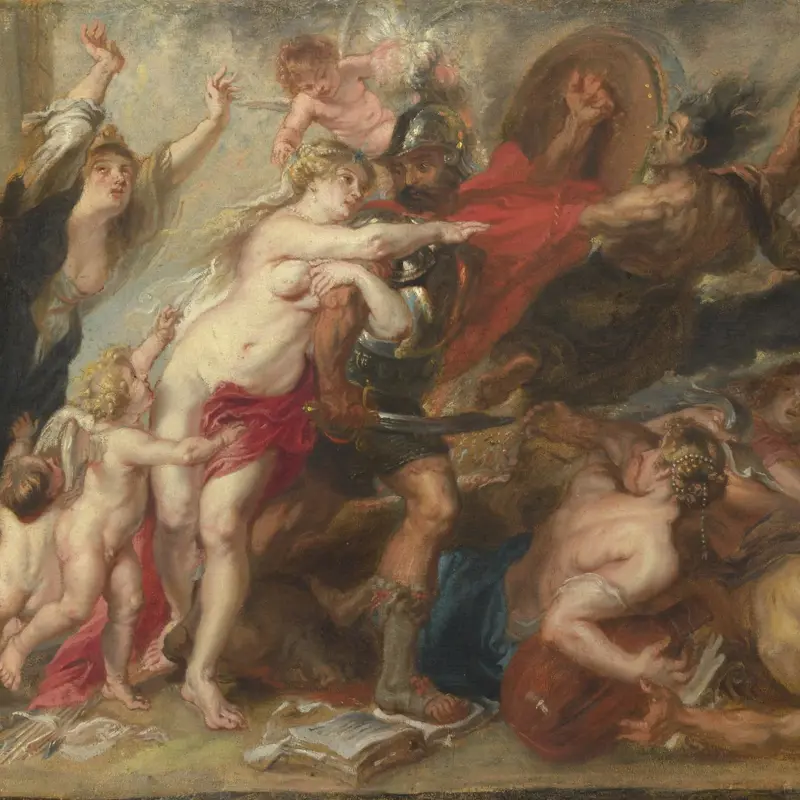Peter Paul Rubens, 'A Roman Triumph', about 1630
About the work
Overview
A crowd of people relax on a grass bank, enjoying the spectacle of a flamboyant procession celebrating the return of a great general and his army. The columns and alcoves of classical Roman buildings tower over them. Below, trumpeters and pipers blow their instruments and animals are led to the sacrifice. A man balanced precariously high up among a forest of flickering torches lights a taper from a flame, but the tall figure of a priest in brilliant red is the focus of the picture.
Rubens based his image on two of Andrea Mantegna’s series of nine monumental paintings, The Triumphs of Caesar, one of the great works of the Renaissance. Rubens saw the pictures while he was in Mantua. It’s likely that he worked at his own spasmodically over several years, experimenting and making amendments for his own interest and pleasure, as it was still in his possession when he died.
Key facts
Details
- Full title
- A Roman Triumph
- Artist
- Peter Paul Rubens
- Artist dates
- 1577 - 1640
- Date made
- about 1630
- Medium and support
- oil on canvas, mounted on wood
- Dimensions
- 86.8 × 163.9 cm
- Acquisition credit
- Bought, 1856
- Inventory number
- NG278
- Location
- Room 12
- Collection
- Main Collection
- Frame
- 18th-century French Frame
Provenance
Additional information
Text extracted from the ‘Provenance’ section of the catalogue entry in Gregory Martin, ‘National Gallery Catalogues: The Flemish School: circa 1600–circa 1900’, London 1986; for further information, see the full catalogue entry.
Bibliography
-
1824W. Buchanan, Memoirs of Painting: With a Chronological History of the Importation of Pictures by the Great Masters into England Since the French Revolution, London 1824
-
1833J.D. Passavant, 'Besuch bei dem Banquier und Dichter Herrn Rogers', in J.D. Passavant, Kunstreise durch England und Belgien, nebst einem Bericht über den Bau des Domthurms zu Frankfurt am Main, Frankfurt am Main 1833
-
1856Christie & Manson, Catalogue of the Very Celebrated Collection of Works of Art: The Property of Samuel Rogers, Esq., London, 28 April 1856
-
1886M. Rooses, L'œuvre de P. P. Rubens: Histoire et description de ses tableaux et dessins, 5 vols, Antwerp 1886-92
-
1942H.B. Wehle, 'The Triumph of Henri Iv by Rubens', Metropolitan Museum of Art Bulletin, I, 1942, pp. 213-8
-
1979A. Martindale, The Triumphs of Caesar by Andrea Mantegna in the Collection of Her Majesty the Queen at Hampton Court, London 1979
-
1979A. Braham, Rubens, Themes and Painters in the National Gallery 8, London 1979
-
1982J.M. Muller, 'Rubens's Theory and Practice of the Imitation of Art', Art Bulletin, LXIV, 1982, pp. 229-47
-
1986Martin, Gregory, National Gallery Catalogues: The Flemish School, circa 1600 - circa 1900, London 1986
-
1987C. White, Peter Paul Rubens: Man and Artist, New Haven 1987
-
1989M. Jaffé, Rubens: Catalogo completo, Milan 1989
-
1991C.-N. Cochin, II, Le voyage d'Italie de Charles-Nicolas Cochin (1758): Édité en facsimile avec une introduction et des notes [par] Christian Michel, ed. C. Michel, facsimile edn, Rome 1991
-
1995A. Vergara, 'The "Room of Rubens" in the Collection of the 10th Admiral of Castile', Apollo, CXLI/396, 1995, pp. 34-9
-
1995J. Wood, 'Damaged by Time and Rubens: Rubens's Restorations and Retouchings', Apollo, CXLII, 1995, pp. 16-23
-
1996O. von Simson, Peter Paul Rubens (1577-1640): Humanist, Maler und Diplomat, Mainz 1996
-
1997P. Cherry and M.B. Burke, Collections of Paintings in Madrid, 1601-1755, vol. 1, ed. M.L. Gilbert, Los Angeles 1997
-
1997M. Migliorini, 'Note sul collezionismo genovese da un manoscritto settecentesco e aggiornamenti su dipinti di Van Dyck a Genova', Studi di storia delle arti, IX, 1999, pp. 211-33
-
2001
C. Baker and T. Henry, The National Gallery: Complete Illustrated Catalogue, London 2001
-
2002J. Wood, Rubens: Drawing on Italy, Edinburgh 2002
-
2004A. Brejon de Lavergnée, Rubens (exh. cat., Palais des Beaux-Arts, Lille), Paris 2004
-
2004G. Agosti, 'Giovanni: Su Mantegna, 7 (Nell'Europa del Seicento)', Prospettiva, 115-116, 2004, pp. 135-58
-
2004A. Brejon de Lavergnée, Rubens (exh. cat. Palais des Beaux-Arts, Lille, 6 March - 14 June 2004), Lille 2004
-
2007A. Delaforce, 'From Madrid to Lisbon and Vienna: The Journey of the Celebrated Paintings of Juan Tomás Enríquez de Cabrera, Almirante de Castilla', The Burlington Magazine, CXLIX/1249, 2007, pp. 246-60
-
2024C. Elam and G. Rebecchini, Mantegna: The Triumphs of Caesar, London 2024
About this record
If you know more about this work or have spotted an error, please contact us. Please note that exhibition histories are listed from 2009 onwards. Bibliographies may not be complete; more comprehensive information is available in the National Gallery Library.

